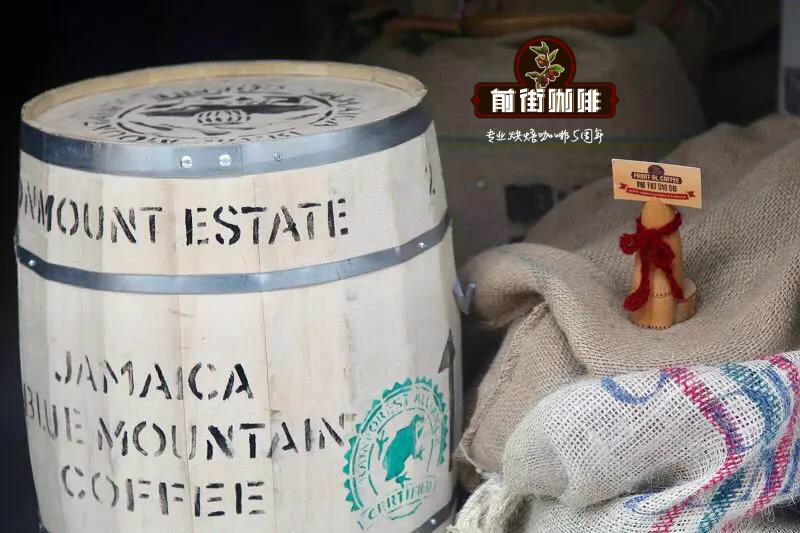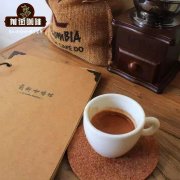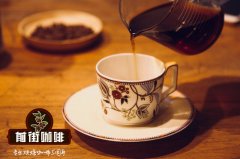What does the coffee fruit look like? What do coffee beans look like? What is it made of?

Professional coffee knowledge exchange more coffee bean information please follow the coffee workshop (Wechat official account cafe_style
Coffee fruit
The coffee fruit like a cherry is actually delicious after several procedures when we buy the coffee beans that we buy and grind. And how the little guy becomes raw beans, let's take a look at layers of exploitation and peeling off the coffee fruit.
Generally speaking, the raw coffee fruit is turquoise.
The fruit turns red when it is ripe, but it depends on the type of coffee (such as Brazil yellow bourbon, yellow Kaduai turning yellow).
The coffee fruit is rich in water, which explodes after a little squeeze, and the juice has a light and sweet taste.
The pods (also known as sheep cortex, seed shell, endocarp) that are protected by pectin layer pop out when the flesh is torn open. After washing, the pulp can be eaten raw, it can also be used to make pulp tea, or to make coffee berry wine, or to be directly used as fertilizer.
Normal coffee fruit, when ripe, will develop into two pods, also known as flat beans after roasting.
But sometimes after tearing off the pulp, there will be this abnormal development of a single pod type, because the type is round and rolling, so it is also called round beans or ball beans after baking. Most of this type of coffee fruit is located at the end of the coffee branch, or caused by insect damage, or nutritional imbalance and other factors.
But sometimes after tearing off the pulp, there will be this abnormal development of a single pod type, because the type is round and rolling, so it is also called round beans or ball beans after baking. Most of this type of coffee fruit is located at the end of the coffee branch, or caused by insect damage, or nutritional imbalance and other factors.
Coffee beans
After removing the pectin layer from the pods, the clean pods are exposed, that is, the so-called raw beans with shells.
The pods before and after pectin layer removal were compared.
After grinding off this layer of pod (also known as shelling), it is a raw bean covered with wrinkled silver skin.
Coffee fruit → pulp → pectin layer protected pods → clean pods → grind pods → covered with silver-covered raw beans → remove silver-skinned raw beans.
Generally speaking, the coffee is shelled, the pods are ground off, and it turns into a raw bean before it is shipped. Compared with the fresh fruit, the weight of the coffee is only about 1 prime 5. On the other hand, the silver skin will fall off naturally during the subsequent baking process, and it will become the ripe beans that we finally buy and can be used to brew coffee.
Coffee beans refer to the plant fruits used to make coffee. In a broad sense, there are two kinds of coffee beans in the world, Arabica beans and Robosta beans. The fruit of coffee consists of two oval seeds opposite each other. The connecting side of each other is a flat joint, which is called flat bean. But there is also a round seed called a round bean, which tastes no different.
The main ingredients of coffee
Caffeine: it has a particularly strong bitter taste and stimulates the central nervous system, heart and respiratory system. Appropriate amount of caffeine can also reduce muscle fatigue and promote digestive juice secretion. Because it promotes kidney function, it is diuretic and helps the body to expel excess sodium ions from the body. But eating too much can lead to caffeine poisoning.
Tannic acid: the boiled tannic acid will decompose into pyrouric acid, so the coffee that has been brewed for too long will taste worse.
Fat: the most important ones are acid fat and volatile fat.
Acidic fat: that is, fat contains acid, its strength will vary according to the type of coffee.
Volatile fat: is the main source of coffee aroma, it is a kind of aroma will emit about 40 kinds of aromatic substances.
Protein: the main source of calories, the proportion is not high. Most of the protein in coffee powder will not dissolve out when brewing coffee, so the intake is limited.
Sugar: coffee beans contain about 8% sugar. After baking, most of the sugars are converted to caramel, which browns the coffee and combines with tannins to produce sweetness.
Fiber: the fiber of raw beans will be carbonized after baking and combine with caramel to form the hue of coffee.
Minerals: contains a small amount of lime, iron, phosphorus, sodium carbonate and so on.
-- END
For more professional coffee exchanges, please scan the code and follow Wechat: qiannjie

Please indicate the source of the reprint
Important Notice :
前街咖啡 FrontStreet Coffee has moved to new addredd:
FrontStreet Coffee Address: 315,Donghua East Road,GuangZhou
Tel:020 38364473
- Prev

Is it difficult to make coffee with Philharmonic pressure at home? do you have any equipment to prepare?
Professional coffee knowledge exchange more information about coffee beans Please follow the coffee workshop (Wechat official account cafe_style) in the coffee world, utensils are second only to coffee beans. As a coffee lover, do you know all kinds of coffee utensils? Even the same coffee beans will give off different flavors according to the utensils used ~ come with the editor this time.
- Next

How many kinds of coffee are there? different kinds of Rosa coffee have the same flavor? how can you tell the difference?
Professional coffee knowledge exchange more coffee bean information please follow the coffee workshop (Wechat official account cafe_style) in recent years, the coffee industry gave birth to a new star geisha (Gesha) originated in Ethiopia and was found in Panama. What kinds of rosy summer coffee have you had? What kind of flavor are they? In terms of the flavor description of the types of Rosa coffee produced around the world: Pakistan
Related
- Beginners will see the "Coffee pull flower" guide!
- What is the difference between ice blog purified milk and ordinary milk coffee?
- Why is the Philippines the largest producer of crops in Liberia?
- For coffee extraction, should the fine powder be retained?
- How does extracted espresso fill pressed powder? How much strength does it take to press the powder?
- How to make jasmine cold extract coffee? Is the jasmine + latte good?
- Will this little toy really make the coffee taste better? How does Lily Drip affect coffee extraction?
- Will the action of slapping the filter cup also affect coffee extraction?
- What's the difference between powder-to-water ratio and powder-to-liquid ratio?
- What is the Ethiopian local species? What does it have to do with Heirloom native species?

